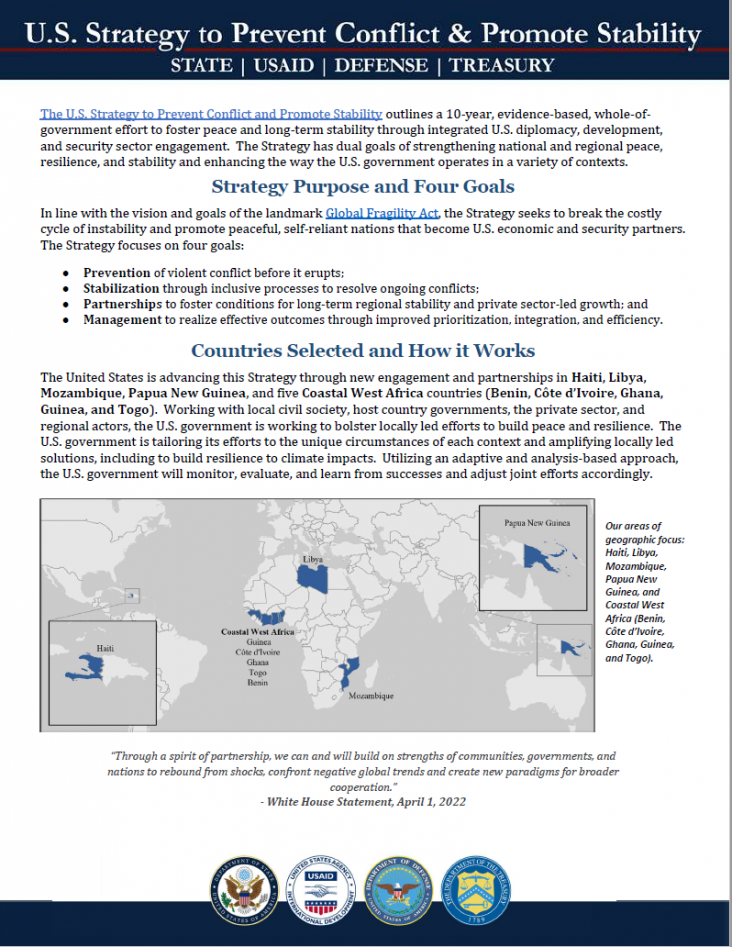Speeches Shim
The U.S. Strategy to Prevent Conflict and Promote Stability sets forth a framework for U.S. government efforts to prevent conflict, stabilize conflict-affected areas, and address global fragility, in line with the Global Fragility Act of 2019. America’s prosperity and security depend on peaceful, self-reliant, U.S. economic and security partners. By breaking the costly cycle of conflict and instability, the United States advances its own security.
The U.S. Strategy to Prevent Conflict and Promote Stability outlines a 10-year, evidence-based, whole-of-government effort to foster peace and long-term stability through integrated U.S. diplomacy, development, and security sector engagement. The Strategy has dual goals of strengthening national and regional peace, resilience, and stability and enhancing the way the U.S. government operates in a variety of contexts.
Strategy Purpose and Four Goals
In line with the vision and goals of the landmark Global Fragility Act, the Strategy seeks to break the costly cycle of instability and promote peaceful, self-reliant nations that become U.S. economic and security partners.
The Strategy focuses on four goals:
- Prevention of violent conflict before it erupts;
- Stabilization through inclusive processes to resolve ongoing conflicts;
- Partnerships to foster conditions for long-term regional stability and private sector-led growth; and
- Management to realize effective outcomes through improved prioritization, integration, and efficiency.
Countries Selected and How it Works
The United States is advancing this Strategy through new engagement and partnerships in Haiti, Libya, Mozambique, Papua New Guinea, and five Coastal West Africa countries (Benin, Côte d’Ivoire, Ghana, Guinea, and Togo). Working with local civil society, host country governments, the private sector, and regional actors, the U.S. government is working to bolster locally led efforts to build peace and resilience. The U.S. government is tailoring its efforts to the unique circumstances of each context and amplifying locally led solutions, including to build resilience to climate impacts. Utilizing an adaptive and analysis-based approach, the U.S. government will monitor, evaluate, and learn from successes and adjust joint efforts accordingly.
“Through a spirit of partnership, we can and will build on strengths of communities, governments, and nations to rebound from shocks, confront negative global trends and create new paradigms for broader cooperation.” - White House Statement, April 1, 2022
Last updated: September 23, 2022


Comment
Make a general inquiry or suggest an improvement.